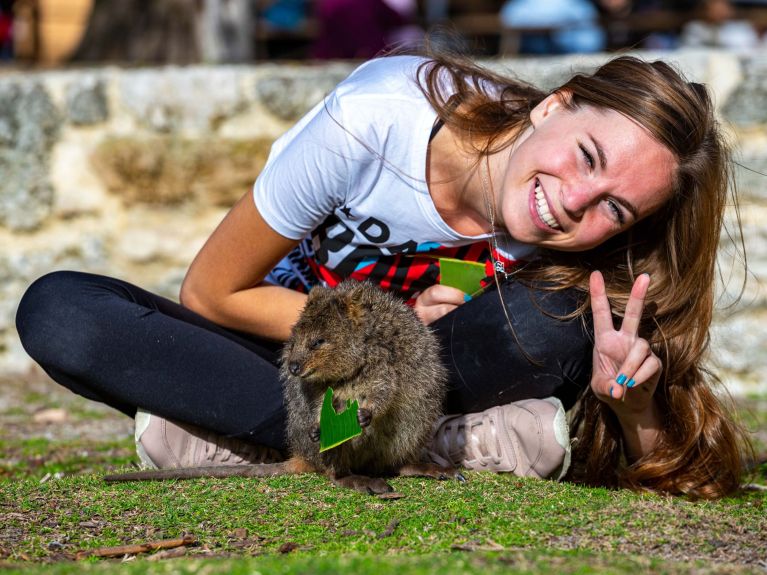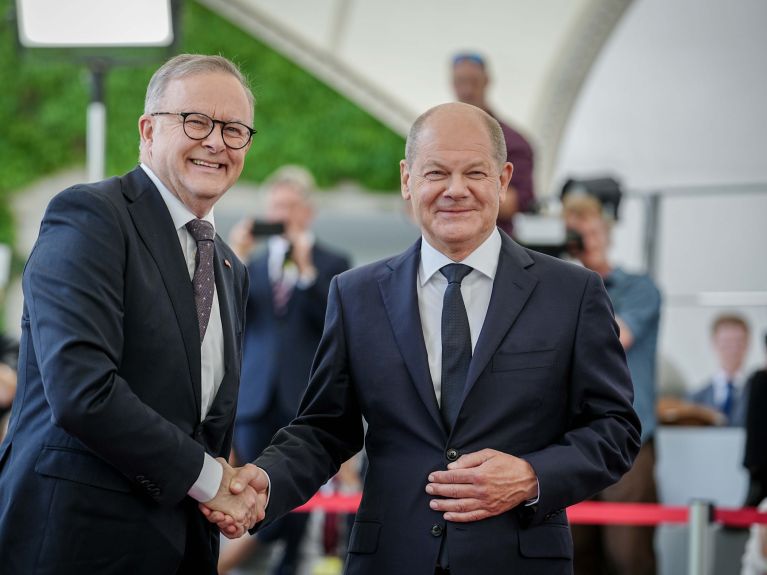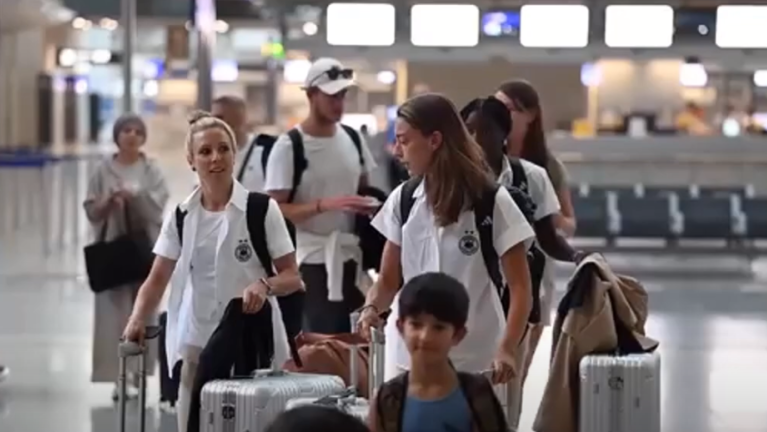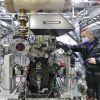Closely linked: Germany and Australia
The flight from Australia to Germany takes about 20 hours – yet the countries are closely linked. An overview of similarities and differences.

The distance between Berlin and Canberra is around 16,000 kilometres. Despite this distance, Australia and Germany have established a close and friendly relationship in the areas of politics, economics, science and culture.
Germany and Australia side by side
At first glance, the countries couldn’t be more different: Australia is a continent in its own right and with a surface area of some 7.69 million square kilometres, it is the largest island on earth. The country is about 21 times the size of Germany (357,600 km²), yet only about a third as many people live there (26.2 million versus 84.4 million). In Australia, large parts of the interior are not populated due to their remoteness, aridity and high temperatures.
Official links
Despite the distance, Australia, Germany and the European Union (EU) work closely together. Australia is strategically important as regional power in the Indo-Pacific. The country has maintained a so-called “strategic partnership” with Germany since 2013. This was further expanded in 2021: the two countries engage in regular dialogue in the field of business and science, as well as on security policy issues and between the armed forces.

Important trading partners
Germany is Australia’s second most important trading partner in Europe. Despite its small population, Australia is economically important for Germany, too. The country is the fifth largest economy in the Asia-Pacific region after China, Japan, India and South Korea, so it is an important customer for German export products. Cars, machines, household appliances, high-quality food are imported from Germany, as well as a wide range of medicines. Meanwhile Australia primarily supplies Germany with raw materials, including precious metals such as gold, but also agricultural products. In future, Australia will also play a strategically important role for Germany as a supplier of battery raw materials such as lithium and nickel, as well as rare earths.
Close cooperation in the energy sector
The two countries aim to further expand their cooperation in the field of energy, too. A German-Australian Energy Partnership has been in place since 2017. One particular focus here is green hydrogen, i.e. hydrogen produced using renewable energies. At the end of 2020 a German-Australian hydrogen project was set up to investigate whether it makes sense to transport this hydrogen from Australia to Germany. Initial insights from the HySupply study indicate that importing hydrogen in large quantities is technically feasible and would make economic sense.
Free trade agreement
The coming years could see even more progress in the area of economic exchange. Australia has been negotiating a free trade agreement with the EU since 2018 to facilitate movement between the markets. The negotiations are not entirely straightforward, however: in particular, the EU does not agree with Australian producers having the right to use EU protected names such as prosecco, mozzarella, feta and parmesan. Meanwhile Australia argues that European emigrants brought their culture with them, so they should be allowed to continue using the names.
Science partnership
There is particularly close cooperation in the university sector, where the countries are linked by more than 600 collaborative ventures. Cooperation between Germany and Australia goes back almost half a century. It is based on an intergovernmental agreement concluded in 1976. There is also an Australia-Germany Research Network (AGRN) which has been in existence since 2018. This acts as an intermediary for new cooperation partners in research and industry via the career platform LinkedIn.
A history of immigration
German settlers were among the first free Europeans to arrive in Australia, and there are still almost one million Australian citizens with German roots today. The settlers helped develop the land, especially in South Australia. Commercial winegrowing can be traced back to six winegrowers from Hesse. Ludwig Leichhardt was a German who is well-known in Australia. He was an explorer and adventurer who explored northern and central Australia and led two important expeditions. But one of the main reasons he is legendary is because he disappeared without a trace on his third expedition – together with seven other men, 20 mules, 50 oxen, seven horses and large amounts of equipment.
The Indo-Pacific Initiative
Security, stability and open trade routes in the Indo-Pacific are very important to both countries. The Federal Government set out its position in September 2020 in its Indo-Pacific Guidelines and has since increased its engagement in the region. The Federal Armed Forces have participated in military exercises in Australia, while state visits to the region have lent weight to the German position. The two countries have set themselves the goal of counteracting any potential conflict in the region and actively promoting peace.
Dieses YouTube-Video kann in einem neuen Tab abgespielt werden
YouTube öffnenThird party content
We use YouTube to embed content that may collect data about your activity. Please review the details and accept the service to see this content.
Open consent formSporting exchange
Australia and Germany share a love of sport. Sydney hosted the Olympic Games in 2000 and Brisbane will host them in 2032. Meanwhile Australia and New Zealand are hosting the Women’s World Cup in July and August 2023. This will be the first time the World Cup has been held in the southern hemisphere and the first time it has been hosted by two countries. Football officials in the two countries hope the tournament will shift the focus of Australians from rugby, cricket and Australian Rules Football (AFL) a little more towards soccer.
Myths and clichés
While many Australians believe that people in Germany don’t have much of a sense of humour, a lot of Germans tend to think Australia is a country full of dangerous and poisonous animals. Yet Germany has exceptionally talented comedians, and Australia is far less dangerous than many people think. Most animals have a greater fear of tourists than vice versa, and by taking certain safety measures, visitors can easily protect themselves from poisonous snakes and spiders, sharks, jellyfish, crocodiles and dingoes. In fact the fifth continent boasts many animals that really can only be experienced in the wild in Australia – including kangaroos, koalas, wombats, platypuses and quokkas. The latter do have a “dangerously” cute smile, however.



